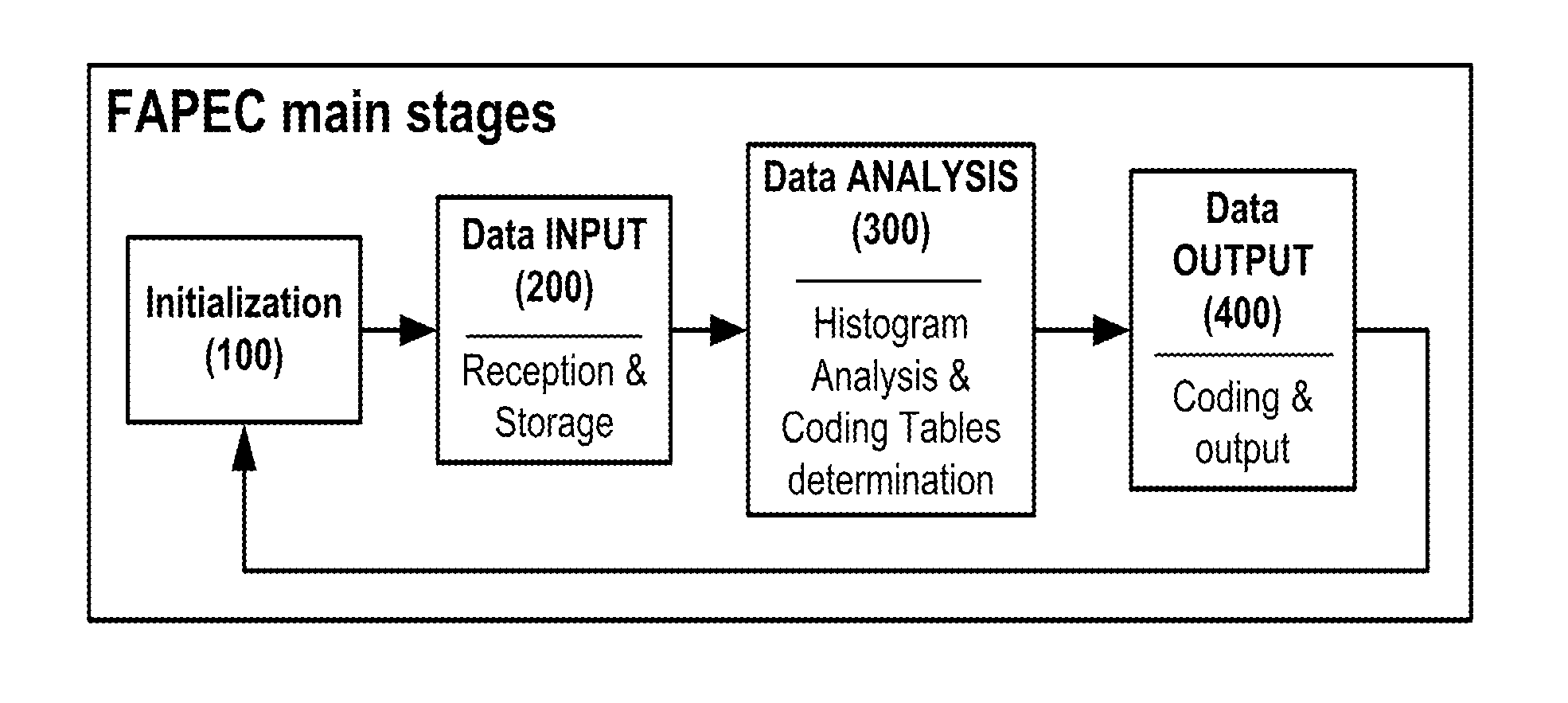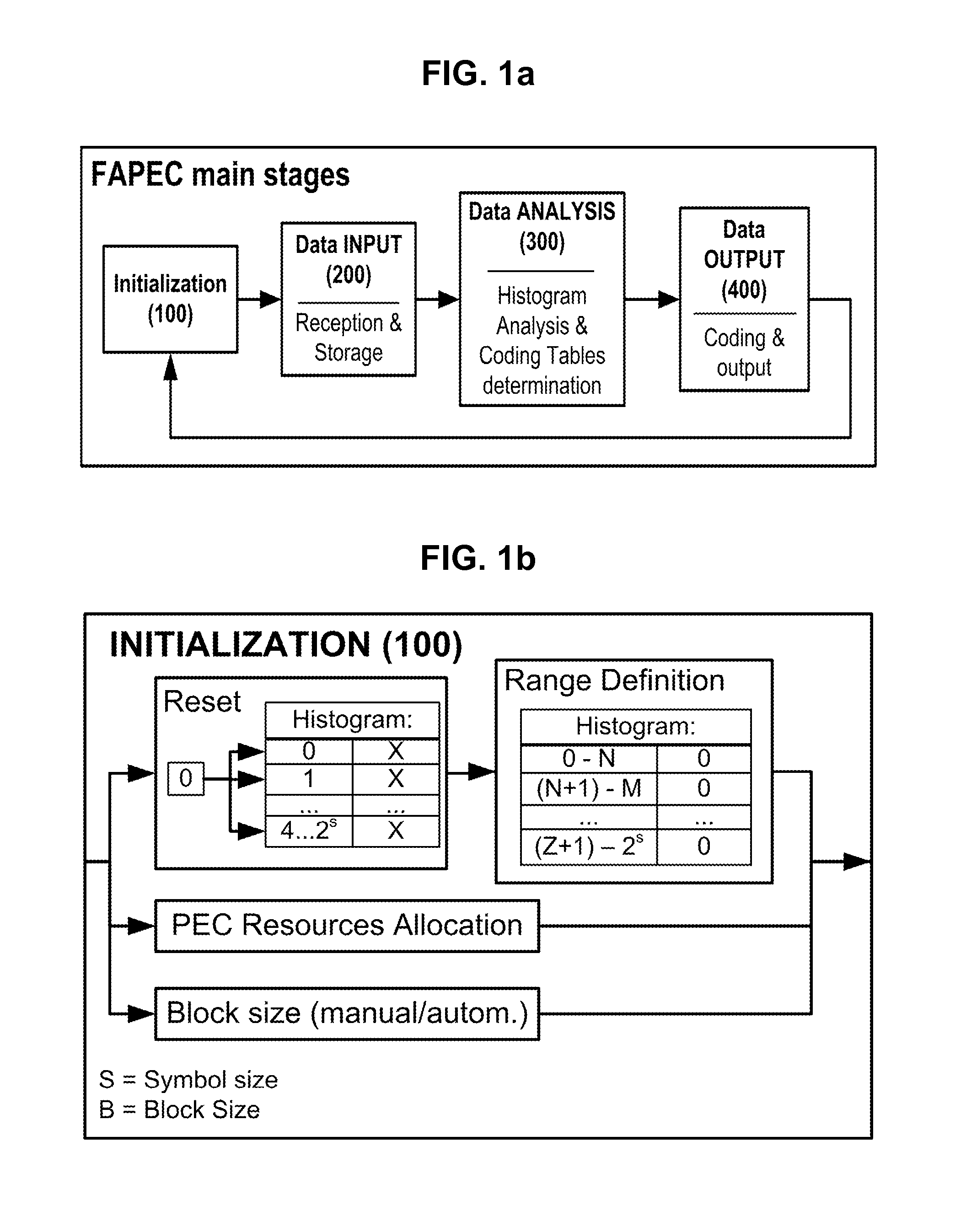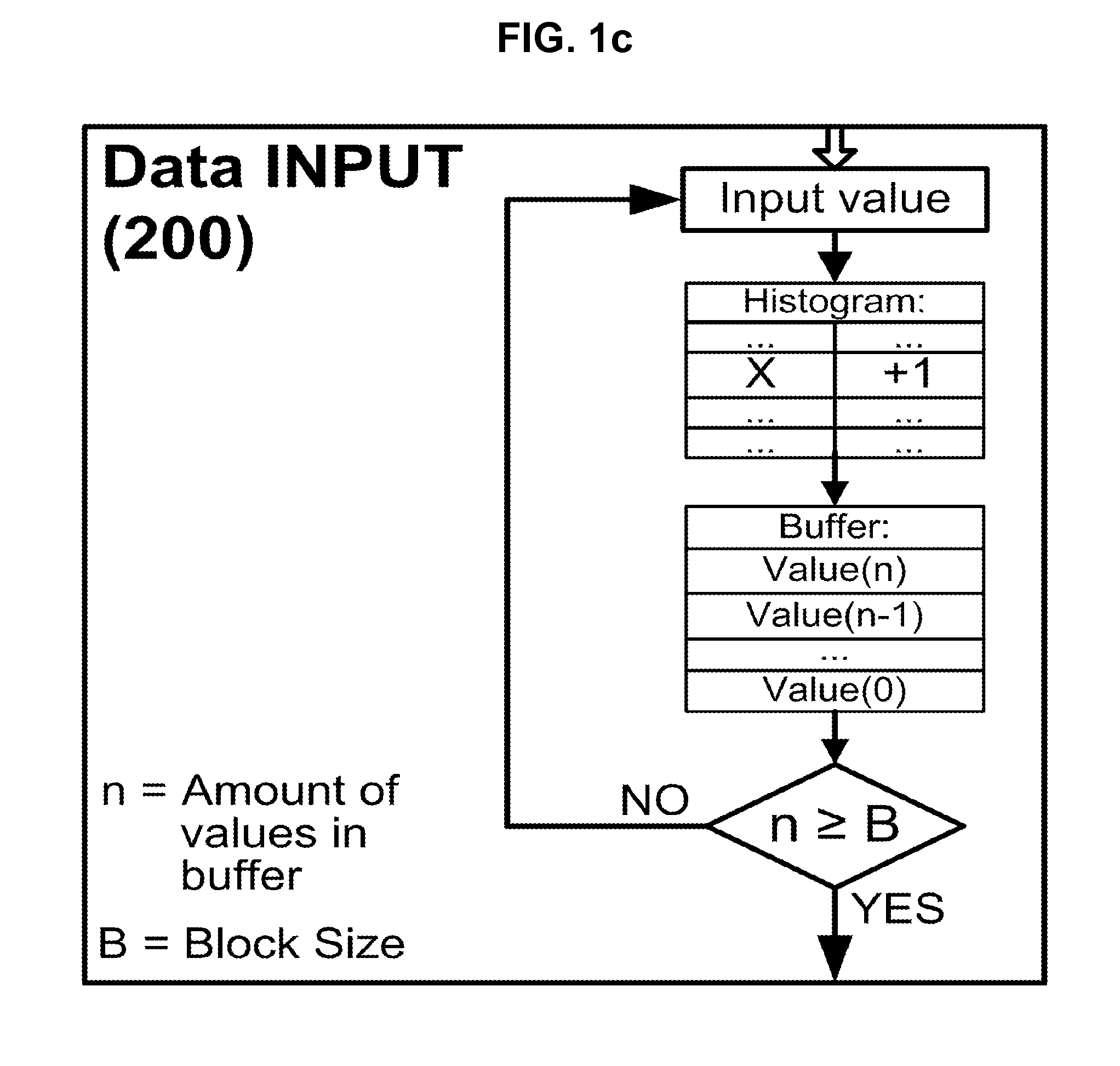Method for fully adaptive calibration of a prediction error coder
a prediction error and coder technology, applied in the field of fully adaptive calibration of prediction error coders, can solve the problems of prediction errors, outputting prediction errors, prediction errors, etc., and achieve the effect of fast and precise, faster and robustness
- Summary
- Abstract
- Description
- Claims
- Application Information
AI Technical Summary
Benefits of technology
Problems solved by technology
Method used
Image
Examples
Embodiment Construction
[0062]As it is shown in the attached figures, the FAPEC is an auto-calibrated coder that selects a coding table and coding option offering nearly-optimal results for a given data block. The length of a block is completely configurable and not necessarily restricted to a power of 2.
[0063]The method for fully adaptive calibration of a prediction error coder comprises (as illustrated in FIGS. 1a-1e):
[0064]a first step of initialization (100), comprising[0065]a first initialization of a histogram of values (the histogram is a logarithmic-like histogram that is started with full resolution and increases its bin size for larger values), allocating the necessary resources, if it is not already available, and setting all bins to zero and mapping each histogram bin to a given value or range of values to be compressed; the histogram must have between 4 and H bins with H=2S, being S the size in bits of the symbols to be compressed;[0066]a second initialization of a variable block size (B) to a...
PUM
 Login to View More
Login to View More Abstract
Description
Claims
Application Information
 Login to View More
Login to View More - R&D
- Intellectual Property
- Life Sciences
- Materials
- Tech Scout
- Unparalleled Data Quality
- Higher Quality Content
- 60% Fewer Hallucinations
Browse by: Latest US Patents, China's latest patents, Technical Efficacy Thesaurus, Application Domain, Technology Topic, Popular Technical Reports.
© 2025 PatSnap. All rights reserved.Legal|Privacy policy|Modern Slavery Act Transparency Statement|Sitemap|About US| Contact US: help@patsnap.com



